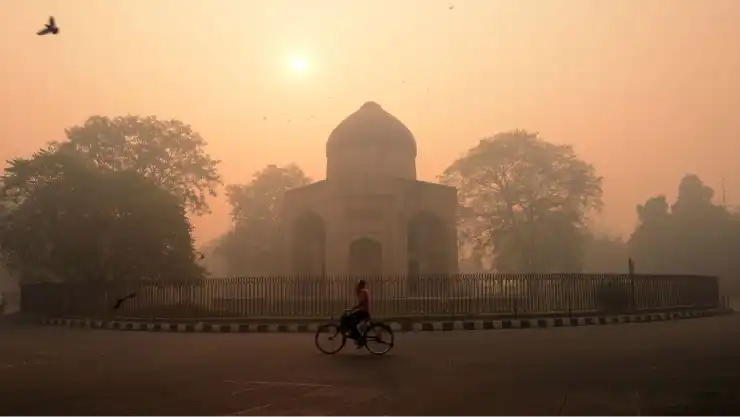Every year, Delhi faces the same suffocating problem: toxic air that turns daily life hazardous. In recent days, air quality across the city and its surrounding satellite towns has hovered between “poor” and “very poor.”

The situation worsened sharply after Diwali, when fireworks filled the night sky with smoke. Reports called it the worst post-Diwali air quality in four years. Once again, the city finds itself confronting a predictable yet avoidable pollution crisis.
No single factor is to blame. Firecrackers, vehicular emissions, and stubble burning in Punjab, Haryana, and Uttar Pradesh combine to create dangerous air. Winter conditions—colder temperatures and low wind speeds—trap pollutants close to the ground, exacerbating the problem.
This year, conflicting reports emerged about which factors contributed most. Some media cited a climate research firm claiming a 77% decline in stubble burning due to floods damaging crops, suggesting firecrackers were the main culprit. But official data from Punjab tells a different story: stubble-burning incidents in the past 10 days have tripled, with over 350 cases reported, compared to 116 earlier in October.
Efforts over the years to reduce crop fires through awareness campaigns and machinery subsidies have had limited effect. While incidents fell from 36,663 in 2023 to 10,909 last year, burning remains the cheapest option for clearing fields.
Fireworks are another major contributor. Just before Diwali, India’s Supreme Court relaxed a five-year ban, allowing the use of “green crackers” for six hours over two days. Experts warned that these crackers are only 20–30% less polluting. In practice, restrictions were widely ignored, with fireworks being sold and burst well outside permitted hours, including highly polluting varieties.
The result is thick, hazardous air that causes coughing, watery eyes, and breathlessness. Long-term exposure weakens the body’s natural defenses and increases susceptibility to serious health problems. Yet, the human cost rarely drives meaningful action. Political leaders engage in annual blame games instead.
This year, Delhi’s Environment Minister accused Punjab officials of pushing farmers to burn stubble to worsen air quality, while Punjab’s government denied the claims and criticized Delhi for misrepresenting the issue. Experts and citizens argue that only coordinated, long-term solutions between state and central governments can address the crisis, rather than temporary, seasonal measures.
As winter advances, Delhi and much of northern India once again struggle to breathe, trapped in a recurring cycle of pollution that shows little sign of ending.
